
A recent survey suggested that beets are the second most hated vegetable in the United States – being narrowly beaten by turnips. It’s not that they’re unlovable, perhaps they’re just badly cooked.
But, deep in your heart and with a fraction of your mind, you know that veggies are good for you. Within that, you should be eating an array of colors – mostly with skins/peels on for the greatest benefits of all.
When all considered, don’t you want to sample some pickled beets, just like great-grandma used to make? Sure you do. Here’s why:
- beets help to lower your blood pressure
- they increase exercise stamina – a fantastic post-workout drink!
- beets are full of betalains (antioxidants) which help to prevent cancer
- plus, beets are anti-inflammatory
Set your food preferences and cravings aside and hear me out for a moment.
Relearn to eat diversely by practicing the art of cooking (and preserving) at home. I know where the world would be if we all ate carb-filled doughnuts and potatoes each and every day… Tasty, yes. Healthy in the long run? A definite no.
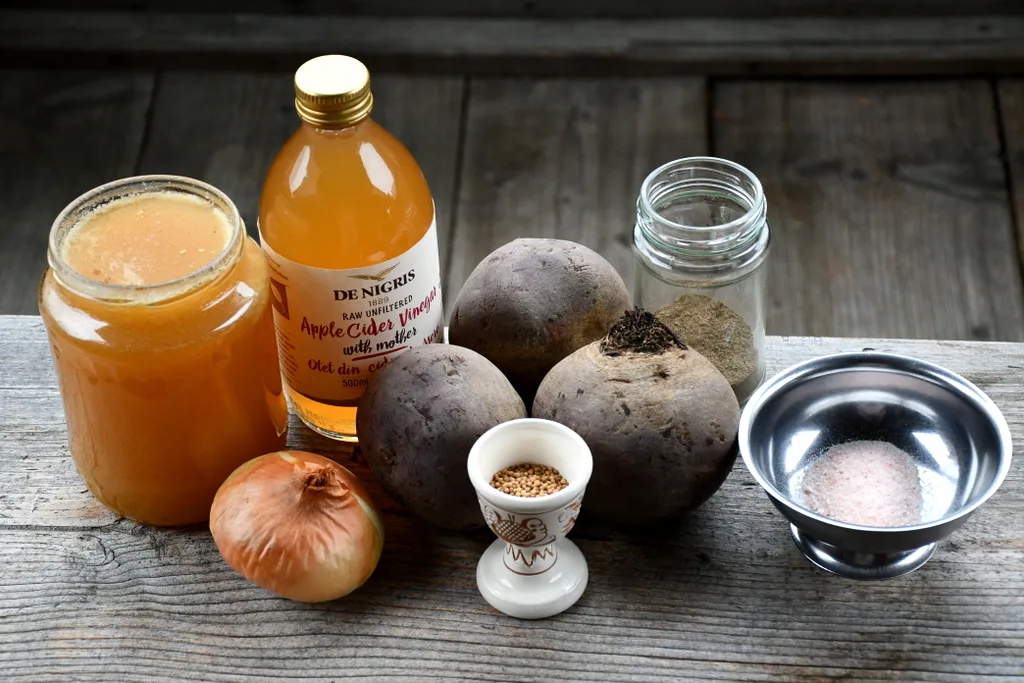
When beets are in season, do as any learned person would do, make pickled beets.
Choosing Beets
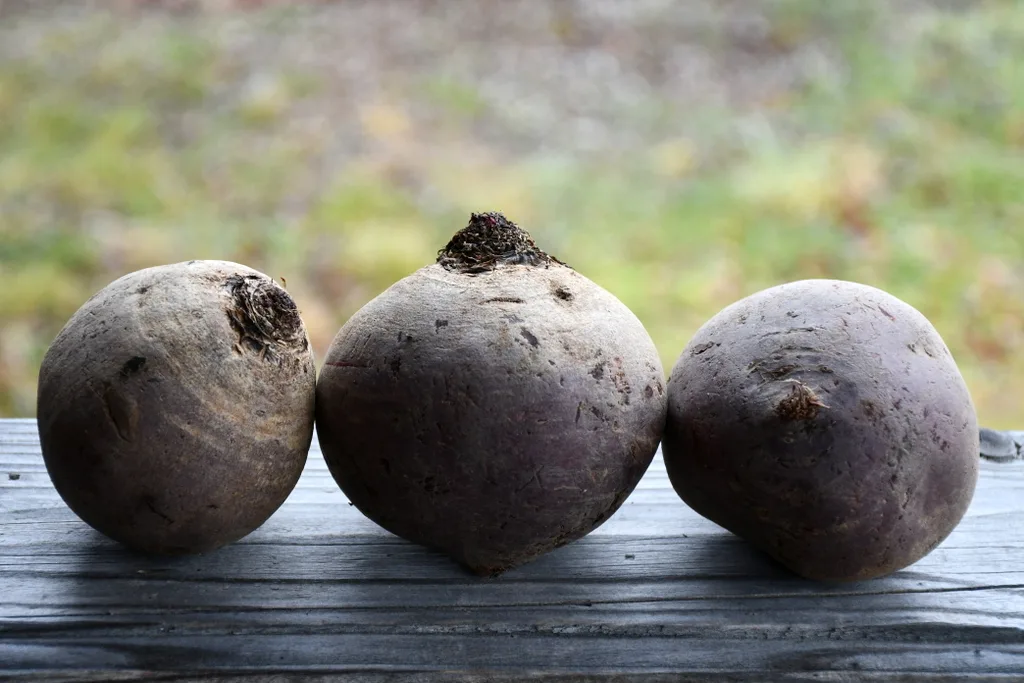
Beets have the most enjoyable texture when freshly harvested.
The best beets you can find are probably the ones grown in your garden. Next best thing is to head to the farmers market or CSA, then to the grocery store.
When choosing beets, make sure to buy only as much as you need at once. They should be smallish and firm. Large to gigantic beets do exist, though they tend to be more watery, with a less desirable texture.
For the most part, the skin should be smooth and of a rich color. When they are displayed with their greens attached (possibly the absolute best part of the beet), then you will know by their appearance whether they are fresh, or not.
Knowing that beets don’t last all that long in storage, it is wise to do something with them well before they get all mushy – then no one will want them for dinner. At the same time, food waste will continue to rise.
If your beets do happen to get mushy before you have the desire to eat them, you can always tuck them into a winter-warming borscht.
Pickled Beets Ingredients
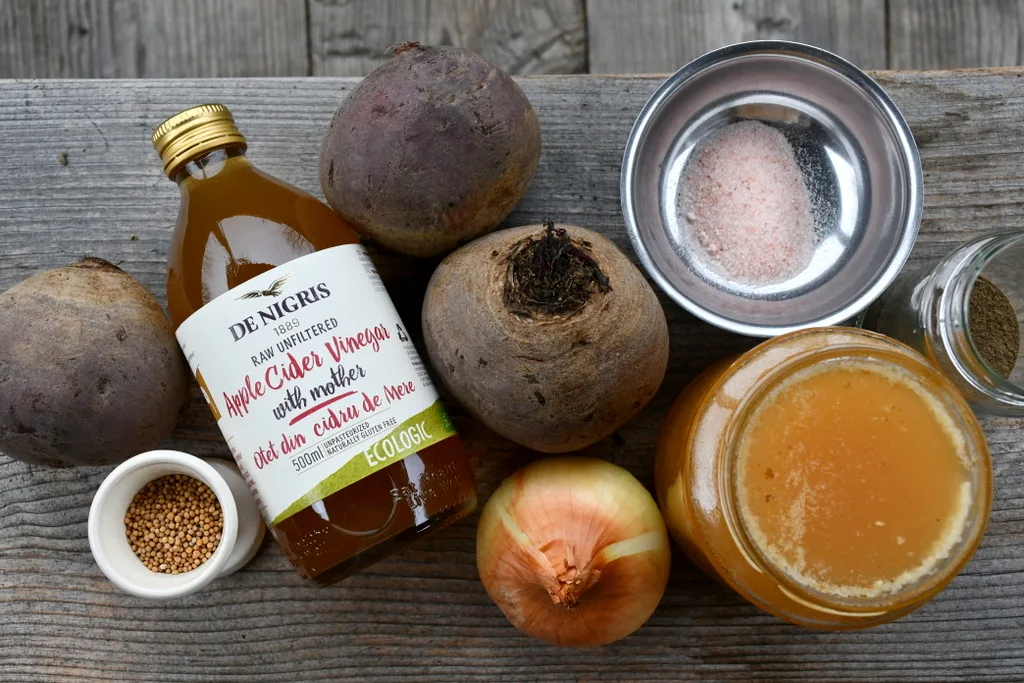
There’s more than one delicious way to pickle beets.
First, I’ll give you mine, then you can decide for yourself if it takes more spices, fewer onions, more sugar, or whatever the case may be for your taste buds.
- 3-4 beets, about 1 pound, red or golden, washed and scrubbed
- 1 1/2 cups apple cider vinegar
- 1 1/2 cups water
- 2-6 tablespoons honey, or sugar
- salt and black pepper
- 1 large onion, optional, halved and thinly sliced
- spices, optional: celery seed, coriander seed, whole peppercorns, mustard seed, bay leaf, dill seed, whole cloves, cinnamon stick
Once you’ve gathered your ingredients, you get to decide between two preparation methods.
Instructions for Pickled Beets
Beets are excellently cooked in one of two ways: roasted or boiled.
To Roast Beets
You can put parchment paper underneath the beets in your baking sheet. Or you can just roast them quite simply in a pan. Naturally, you’ll be washing that baking sheet anyway. Easy is as easy does. Choose what works best for you, in your kitchen.
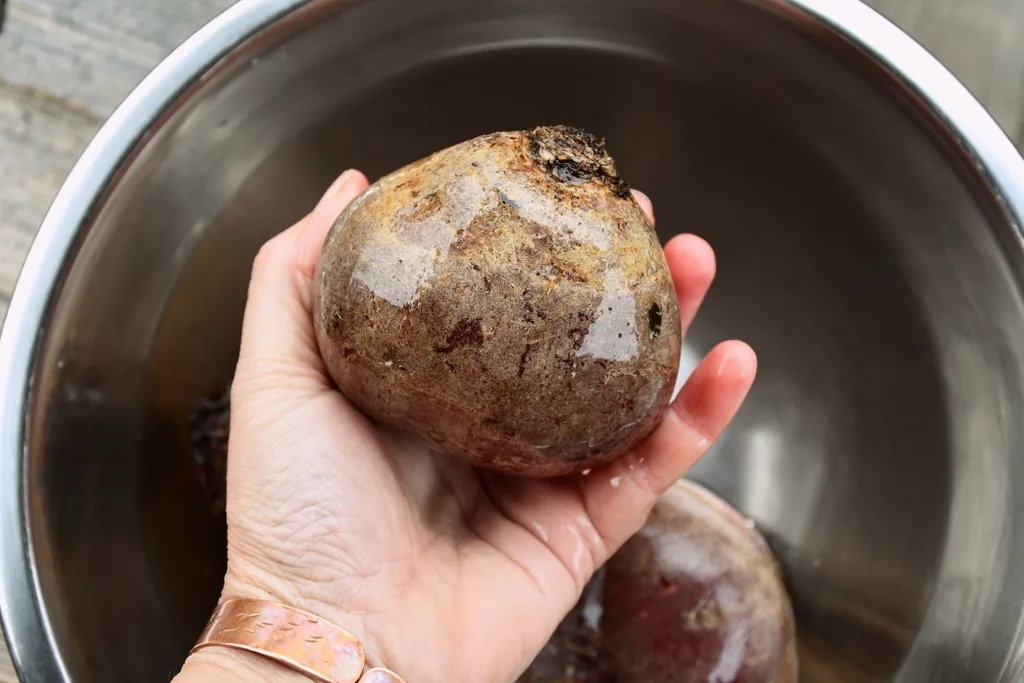
Before roasting your beets, give them a quick rinse, removing any stuck dirt. Rub each beet with coconut oil or olive oil, sprinkle with salt if desired, then toss them in the preheated oven at 375°F.
Roasting time depends solely on the size of the beets. 40 minutes to an hour and a half is to be expected till they are done. Doneness being when a knife can be smoothly inserted through the taproot.
Check every ten minutes until they are of desired consistency since this is as cooked as the beets will get.
Once you add the brine, no further cooking is required.
To Boil Beets
First, you need to wash the taproot and remove the dirt. Then you want to boil it with the skin on, as you do when roasting.
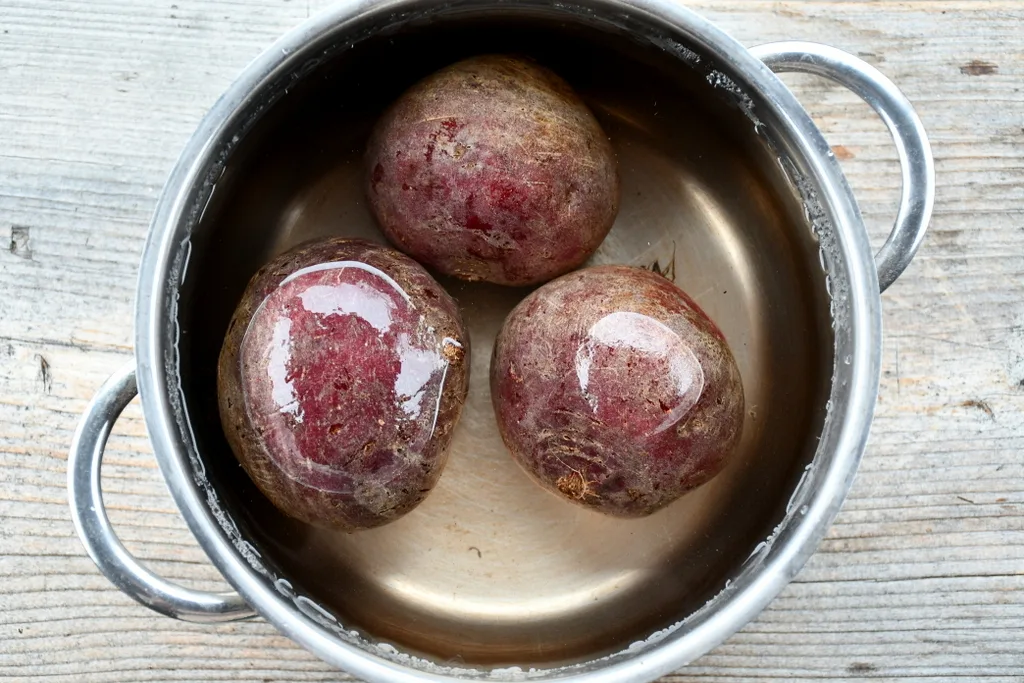
Bring a pot of salted water to a boil and simmer for about an hour until the beets are thoroughly cooked.
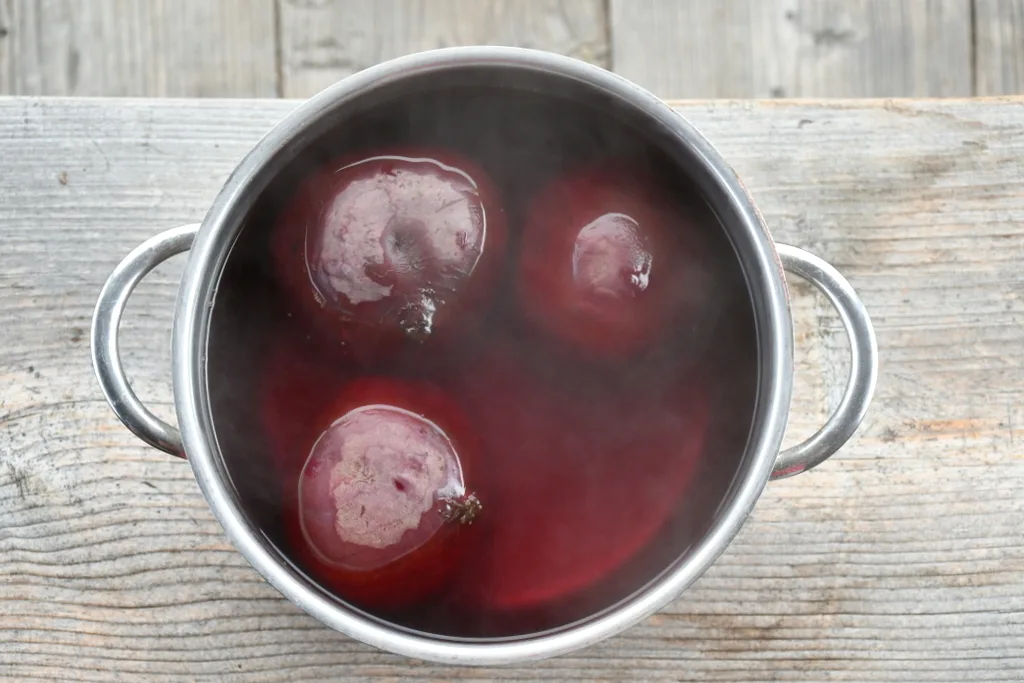
Drain the water, let the beets cool and slip off the skins before cutting them into shape.
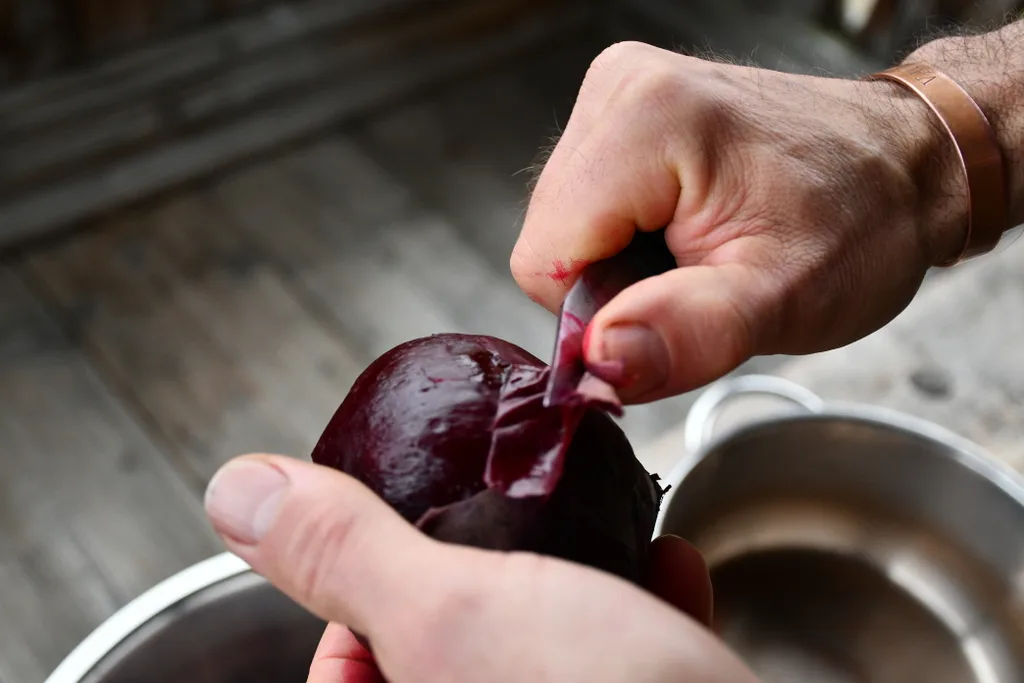
What shape will your beets be?
Once your roasted/boiled and cooled beets are ready to be dealt with, what you have to do now, is peel off the skins and cut them however you like.
I’ve seen them jarred up in small cubes, slivers, round discs and random shapes. Anything goes, as long as you can easily fork them out of a jar.
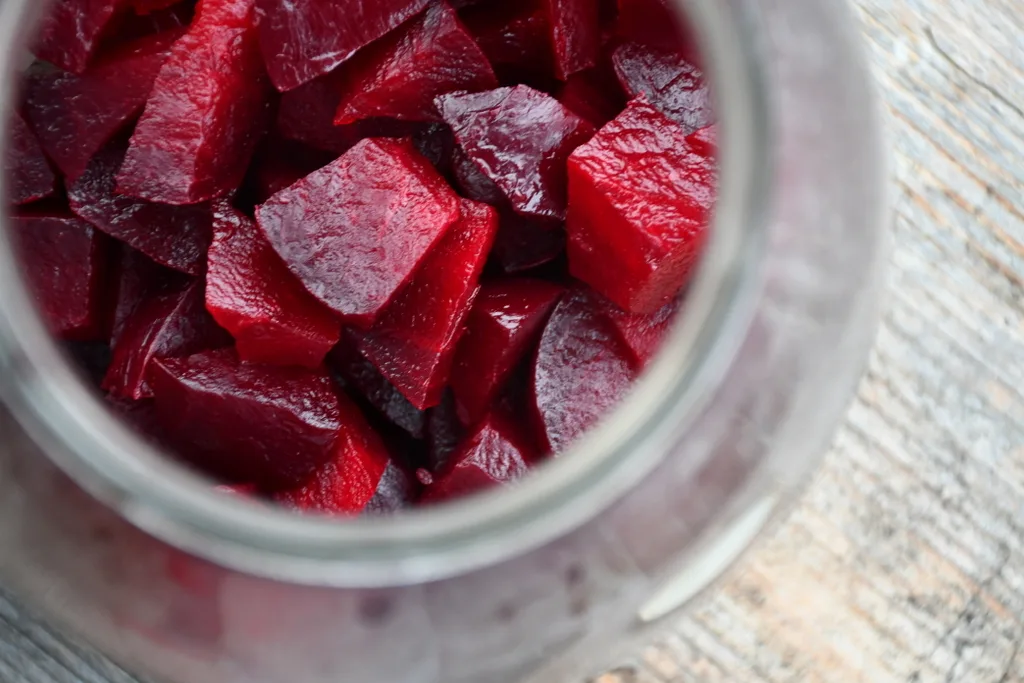
One thing is for sure, make the beets bite-sized for the convenience of those who get to enjoy them.
Making the Beet Brine
Again, there’s more than one way to make a brine. In this case, I’m going to give you a couple of options, then you make it with regards to your time and energy of the day.
For starters, brine can be made one day ahead, to let the flavors and spices meld together.
Mix all brine ingredients in a sauce pot, bring to a light simmer for 10-15 minutes, then let the mixture come to room temperature. Transfer it to a clean jar, and store it in the fridge for 24 hours, up to a month. Cover the roast-and-cut beets with it the following day.
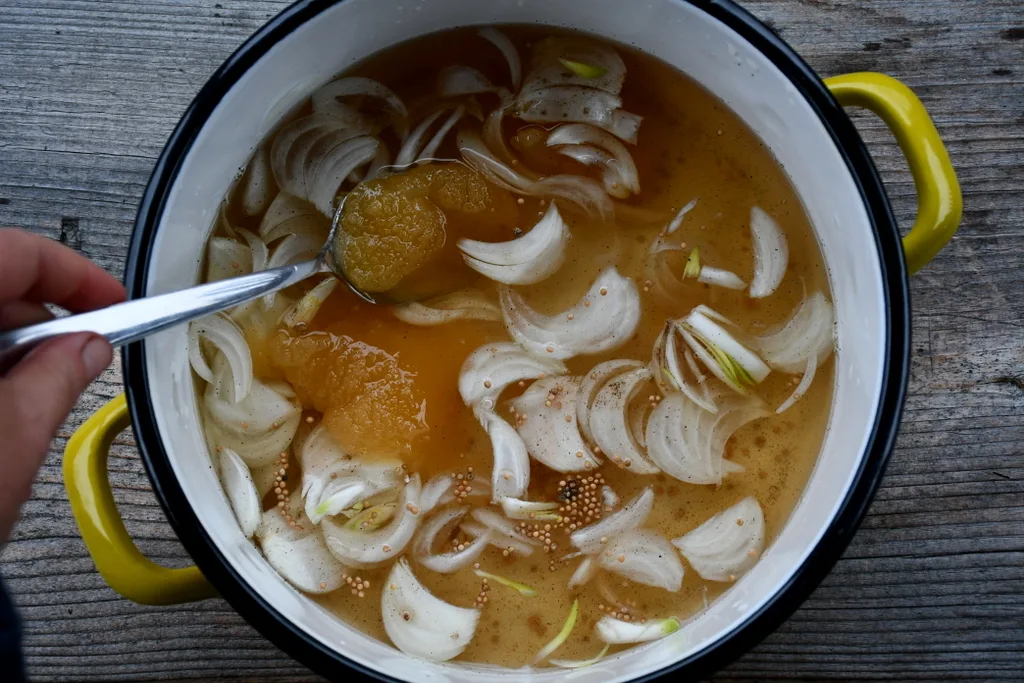
If you are looking for the most energy-efficient, time-saving way to make a pickled beet brine:
Combine the apple cider vinegar, water, honey (or sugar) and spices in a bowl and stir until the sweetness is completely dissolved. At this point, you can season it to your liking with salt, or both salt and pepper.
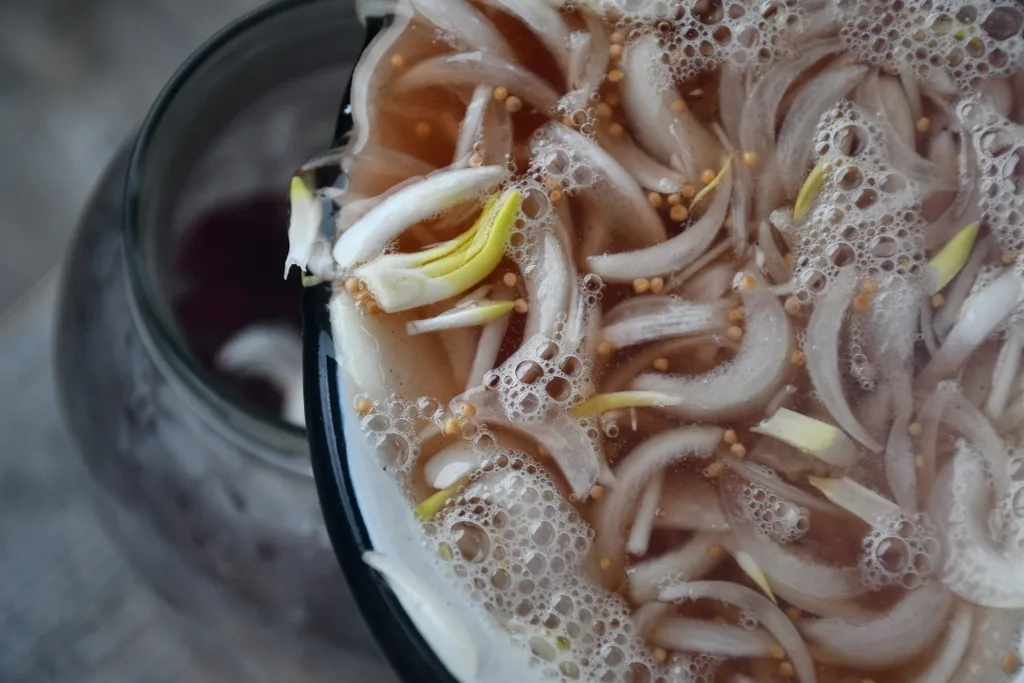
Once your quick brine is ready, pour it over the cut beets (in jars) and put the full jars in the refrigerator, or the cool cellar. All that’s left to do, is wait.
Eating Your Pickled Beets
Pickled beets shouldn’t be eaten straight away. You must allow them to sit for a minimum of 24 hours before indulging in them.
That being said, you definitely need to plan ahead if you intend to serve these quick pickled beets at a holiday meal. Give them time to sit in the brine and allow the flavors to blossom into something deliciously unique that will make people reconsider their dislike for beets.
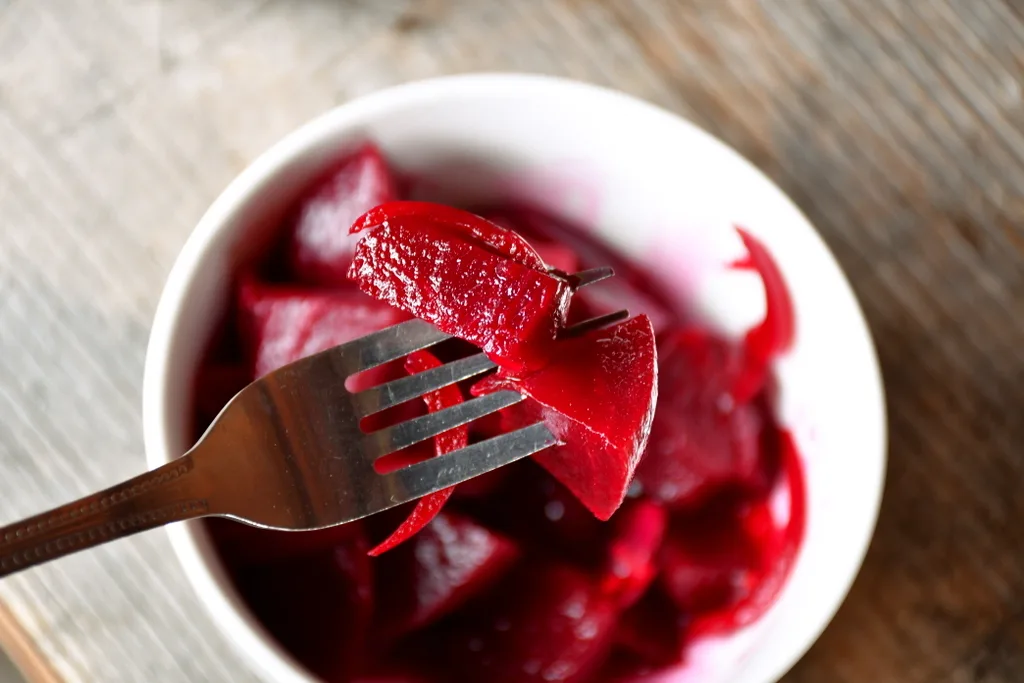
Once ready, pickled beets can be offered up chilled, heated or at room temperature.
Serve your pickled beets sprinkled with feta cheese, add it to a pickled beet sandwich, toss a few slices onto your pizza, or just eat them straight from the jar.
If you’ve got more beets than you know what to do with or more than you could ever eat at once, you might consider canning beets instead.

Get the famous Rural Sprout newsletter delivered to your inbox.
Including Sunday musings from our editor, Tracey, as well as “What’s Up Wednesday” our roundup of what’s in season and new article updates and alerts.

